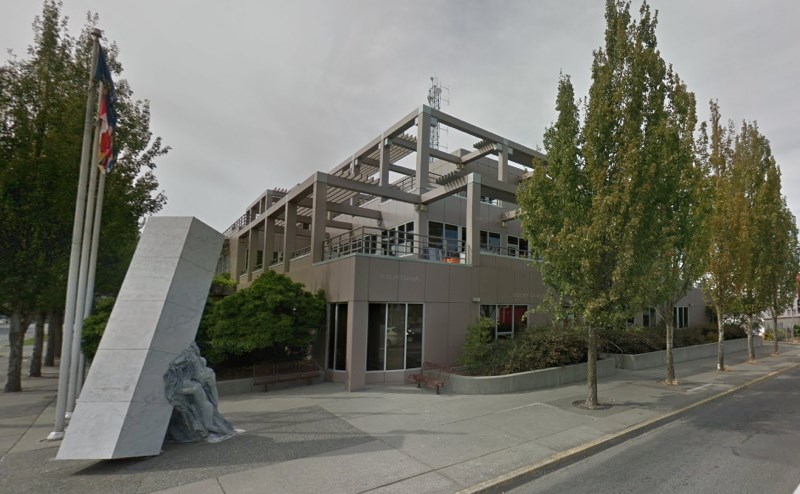Imagine a situation where, instead of calling 911, someone in mental-health distress calls a hotline which summons a mental-health professional. Imagine a harm reduction and addiction outreach worker being called to help someone using drugs in public or showing signs of an overdose.
These are scenarios envisioned by those calling for the defunding of police, an idea which is gaining momentum in the wake of the police killing of George Floyd as a way to address the disproportionate rate of police violence against people of colour.
Defunding the police does not mean disbanding police departments, rather it’s a major redirecting of public funds into health and social services which are better equipped to deal with non-criminal matters, said B.C. Civil Liberties Association executive director Harsha Walia.
“We have to remember, the idea of defunding the police and the idea of redirecting funding to other sectors is not that radical. We’ve been defunding education and health care for years,” Walia said. “The question we need to be asking at the time is this: ‘Who will keep different communities safe based on the needs of diverse communities?’ ” Walia said that might be a mental health counsellor, a peer support worker responding to the opioid crisis or Indigenous-led services.
Rob Gillezeau, an economist at the University of Victoria, has spent much of his career studying anti-racism protests in the U.S. and analyzing the rate at which people of colour are killed by police. Poor records gathering means that Canada does not have the same wealth of data as the U.S., but Gillezeau pointed to a national database compiled by the CBC on police shootings which showed Black and Indigenous people are disproportionately victims of police shootings.
“We know empirically that people of colour are not only treated fundamentally different by the police, they are killed disproportionately by the police,” Gillezeau said. “If you have municipal tax dollars going into a pot, if you are a person of colour and if the police are more likely to hurt you or to shoot your child, is that where you want your money to go?”
Victoria Mayor Lisa Helps said it’s undeniable that police respond to many non-criminal matters, but often, they’re the only ones available. Victoria’s annual police budget is $58.2 million, which is 22 per cent of the city budget.
“I do think it would be good if the police didn’t have to do that work, if they didn’t have to be the first line of call for a mental health breakdown,” Helps said. “But right now there’s literally no one else to call.”
Helps understands that the mistrust between Indigenous communities and the police is rooted in Canada’s colonial legacy which saw police officers take Indigenous people from their homes to attend residential schools, where physical and sexual abuse was widespread.
“We can’t undo that history,” Helps said. But Victoria police are building relationships with marginalized groups to try and re-establish trust.
Esquimalt Mayor Barb Desjardins said police officers are integral to maintaining public safety but she supports an integrated approach to mental health calls. She pointed to the work of Greater Victoria Assertive Community Treatment (ACT) where three Victoria police officers respond to calls alongside mental-health teams comprised of registered psychiatric nurses, social workers, substance abuse specialists and parole officers.
Victoria Police Chief Del Manak said he would like to see more funding for social service programs such as education and mental health supports, but that shouldn’t come at the expense of police departments, which he said are already underfunded.
“We all know by default many services fall to the police because there is no one else,” Manak told the Victoria and Esquimalt Police Board Tuesday evening. “But we also recognize that we’re talking about an under-funded profession and let’s not take away resources from the police but rather talk about adding additional resources where the supports have been taken away.”
Helps and Desjardins, who co-chair the police board, are asking the Victoria Police Department to do a demographic analysis of its members “to understand how the composition of VicPD in terms of black, Indigenous, people of colour and women measures against the composition of the general population,” according to a motion presented to the board Tuesday. Helps said this will help inform recruitment practices to ensure the police force is representative of the community.
Helps and Desjardins are also asking Manak to outline what kind of bias awareness, anti-racism, cultural sensitivity and de-escalation training that Victoria police officers receive and give recommendations on additional training. Manak will provide that at the July police board meeting.
Mike Farnworth, minister of public safety and solicitor general, said in a statement: “We are listening to the voices of those calling for change and watching other jurisdictions — for new ideas on ways to better allocate resources for the care of the most vulnerable in our society, and what more we can do to ensure police are properly trained.
“Here in British Columbia, we have been reinvesting in mental health care support, community-based policing, and gun and gang prevention programs. But we know there is much more to do.”



